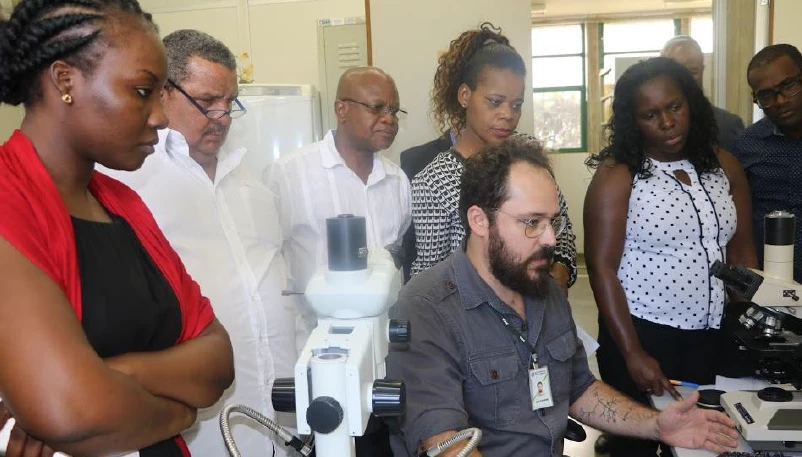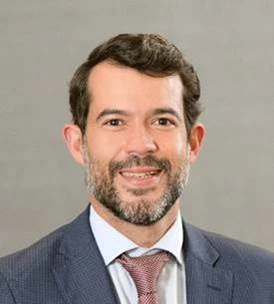
"The Sertão (the dry hinterlands of Brazil) is the size of the world. The Sertão is a part of us," once said Guimarães Rosa, my favorite writer and a great poet of the Cerrado region. Recently I was part of a forest management knowledge exchange trip between Brazil and Mozambique. And I could admire myself the immensity and importance of this habitat, which millions of Brazilians depend on for their water, agricultural productivity, fruits of the land, and energy supply.
The Cerrado is also the home to thousands of species of flora and fauna, many of which are unique for this region; it is also a huge carbon reservoir that prevents the acceleration of climate change. Unfortunately, the Cerrado’s natural ecosystem is degrading at a rapid pace, as vast plots of land are transformed into areas of commercial agriculture or cattle ranching, or degraded for the production of firewood and charcoal.
Mozambique is going through a similar process. The Miombo, the largest biome of the country, loses about 220,000 hectares per year from shifting cultivation and energy production. Not only does it impact local populations who depend on the forest, it also leads to the loss of a longer-term source of income for the country. In addition, the international community stands to lose with the disappearance of fauna and flora and the global implications of greenhouse gas emissions.
New developments seem to hold promise, however. Both countries are united in the fight against deforestation, and both have adopted policies, investments, and actions to reverse this situation. Under the Forest Investment Program (FIP) and the Dedicated Grant Mechanism for Indigenous and Local Communities (DGM) – both part of the Climate Investment Funds (CIF) - , a delegation of Mozambique traveled to Brazil to exchange knowledge on technologies related to forest protection and management and income generation through the cooperative exploration of non-timber forest resources.
Experiences in the Field
"Today we see the value of this forest, and the entire community is committed to protecting this forest around our waters. The sale of macaúba oil (a palm) has complemented our revenues. Now we produce oil, soap, and fertilizer, and we have many plans for expansion”, said Maria de Lourdes, member of the Riachão cooperative. This example of sustainable use of the savannah by the Riachão cooperative, in the north of Minas Gerais State, was inspiring for the Mozambican delegation. In Mozambique, similar initiatives that place value on forest products - mafura (native mahogany) for cosmetics, baobab for food, honey for domestic consumption and export - are minor initiatives, but with huge potential for expansion.
At first glance, the words "charcoal" and "green" do not go together since the cutting of native forests for fuelis a major cause of deforestation, especially in Mozambique. But, in Minas Gerais, a company wants to show that the concept of "green charcoal" is feasible. Plantar, in Itacambira in Minais Gerais produces nearly 50,000 cubic meters of green charcoal monthly, made from the eucalyptus tree—a renewable source. In an area of about 22,000 hectares of degraded land (that had no more original trees in them), the company plants high-yielding varieties of eucalyptus, using the latest technologies to transform wood into charcoal and maintaining the native forests that are still there. The charcoal is used in steel mills and replaces coal, which is a big polluter that causes climate change.
The study trip aroused the curiosity of the Mozambicans. During the trip, the delegation lamented the lack of good experiences related to the exploration of fast-growing exotic species such as eucalyptus. Mozambique is exploring the development of eucalyptus plantations as a means of fighting deforestation. As natural forests are often degraded for charcoal and fire wood , these plantations can reduce the pressure on natural forests by providing an alternative energy source. When visiting Plantar, the team realized that it is possible to professionally manage plantations, especially when the private sector is involved. "On returning to Mozambique, we want to implement some of the examples seen here”, remarked a trip participant from northern Mozambique, referring to some of the technologies used for charcoal production by Plantar.
Mozambique has millions of hectares of degraded land that can be put back into production through good management. The delegation visited some of Brazil’s institutions (ESQL, linked to the University of São Paulo) doing just that; the organizations involved have developed a line-planting technique that mixes fast-growing exotic species with natural forest plantation. This is of high interest to Mozambique, which is willing to develop an economy around restoration of these sites.
Another subject that interested Mozambique was the National Forest Inventory being conducted by the Brazilian Forest Service. The African country has just started its own national forest inventory, supported by funds from the Forest Carbon Partnership Facility (FCPF), managed by the World Bank.
Exactly one year after Mozambique was accepted as a new country into the CIF’s Forest Investment Program, the country already has a plan for getting projects going on the ground. “We were expecting to learn a bit, but were impressed with the array of solutions developed by the Brazilian friends which can be applied in Mozambique”, said Sonia Nordez from the National REDD+ Technical Unit.


Join the Conversation